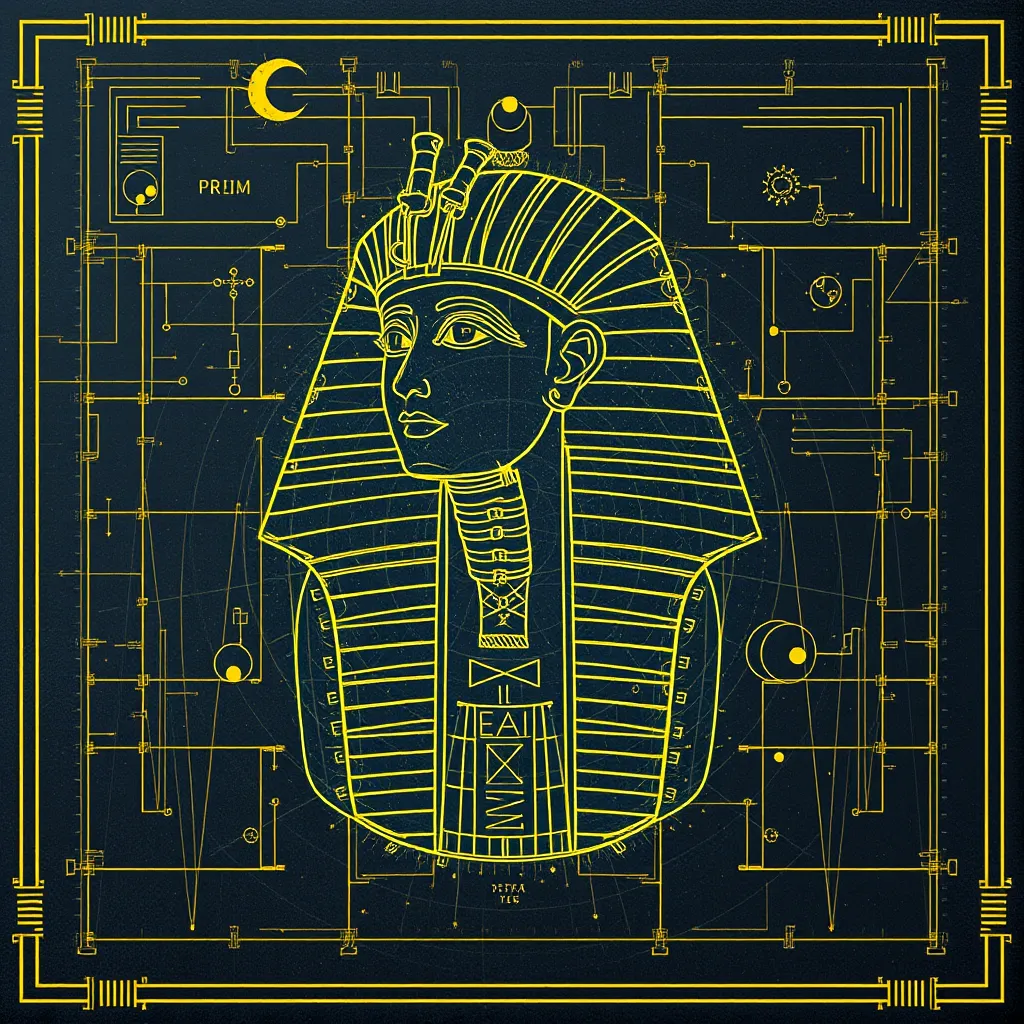The Egyptian Soul’s Blueprint
I. Introduction
The Egyptian Soul’s Blueprint is a profound concept rooted in the ancient Egyptian understanding of the human soul and its journey through life and the afterlife. This blueprint encompasses the various aspects of the soul, reflecting the complexities of human existence as perceived by one of history’s most fascinating civilizations.
Understanding this concept is crucial for grasping the values, beliefs, and practices of ancient Egyptian culture, which placed significant emphasis on the soul’s eternal journey. Through this article, we will explore the historical context, the components of the soul, the journey in the afterlife, and the modern interpretations of these beliefs.
II. Historical Context of the Egyptian Soul
Ancient Egyptians held a distinctive view of the soul, believing that it was composed of multiple parts, each playing a vital role in the individual’s existence and afterlife. Mythology and religion were integral in shaping their beliefs about the soul, intertwining with various deities and narratives that explained the nature of life after death.
Key figures, such as Osiris—the god of the afterlife—and texts like the “Book of the Dead,” provided frameworks for understanding the soul’s journey and significance in both life and death. These texts served as guides for the deceased, highlighting the society’s intricate beliefs surrounding the soul.
III. Components of the Egyptian Soul
The Egyptian conception of the soul is often categorized into five distinct components: Ka, Ba, Akh, Ib, and Sheut. Each of these components plays a crucial role in defining the essence of a person.
- Ka: The life force or spiritual double that resides with the body and is sustained through offerings.
- Ba: The personality aspect, which can travel between the worlds of the living and the dead.
- Akh: The transformed spirit, representing a harmonious blend of the Ka and Ba after death.
- Ib: The heart, considered the seat of emotion and morality, crucial for the weighing of the heart ceremony.
- Sheut: The shadow, which represents a person’s presence and identity, often associated with protection.
These components interact to create a complete soul, emphasizing the interconnectedness of life, personality, morality, and spirituality in ancient Egyptian thought.
IV. The Soul’s Journey in the Afterlife
The journey of the soul does not end with death; instead, it continues into the Duat, the Egyptian underworld. The Duat is a complex realm filled with trials and tribulations that the soul must navigate to achieve eternal life.
One of the pivotal moments in this journey is the weighing of the heart ceremony, where the heart of the deceased is placed on a scale against the feather of Ma’at, representing truth and justice. The outcome of this ceremony determines the fate of the soul—if the heart is lighter than the feather, the soul is granted access to the afterlife; if it is heavier, it faces annihilation.
Osiris, the god of the afterlife, plays a crucial role in this process, signifying resurrection and rebirth. His mythological narrative reflects the hope for immortality and the belief that, through proper rituals and guidance, every soul can attain eternal life.
V. The Influence of the Soul’s Blueprint on Daily Life
The beliefs surrounding the soul significantly influenced daily life in ancient Egypt, shaping ethics, morals, and societal values. The understanding of the soul as a multi-faceted entity encouraged Egyptians to lead lives that were in accordance with Ma’at, ensuring harmony and balance.
These beliefs extended into various aspects of culture, including:
- Art: Artistic expressions often depicted the soul’s journey, emphasizing themes of life, death, and the afterlife.
- Architecture: Temples and tombs were constructed with the soul’s journey in mind, featuring elaborate designs that symbolized the transition to the afterlife.
- Burial Practices: Mummification and grave goods were employed to preserve the body and support the soul’s journey, reflecting the importance of the afterlife.
Moreover, various rituals were performed to honor and preserve the soul, showcasing the Egyptians’ deep reverence for life beyond death.
VI. Modern Interpretations and Relevance
Today, contemporary scholars continue to explore the Egyptian Soul’s Blueprint, recognizing its significance in understanding ancient Egyptian culture and spirituality. The complexities of the soul’s components have parallels in various modern spiritual and psychological theories, illustrating the universal quest for understanding the self.
Moreover, Egyptian beliefs have influenced modern spiritual practices, with many drawing inspiration from the rich tapestry of ancient Egyptian thought. Comparisons can also be made with other cultural concepts of the soul, such as the Hindu Atman or the Greek psyche, highlighting a collective human interest in the nature of existence and the afterlife.
VII. Case Studies and Examples
Numerous tombs and artifacts embody the Egyptian Soul’s Blueprint, providing insight into their beliefs and practices. For instance:
- The Tomb of Tutankhamun: Rich in artifacts and inscriptions that reflect the importance of the afterlife and the soul’s journey.
- The Pyramids of Giza: Architectural marvels designed as gateways for the soul’s ascent to the afterlife.
- Hieroglyphs of the Book of the Dead: These texts contain spells and rituals aimed at guiding the deceased through the Duat.
Notable historical figures, such as Pharaohs and high priests, demonstrated their beliefs about the soul through lavish burial practices, further emphasizing the societal importance of these concepts.
VIII. Conclusion
The Egyptian Soul’s Blueprint serves as a testament to the ancient Egyptians’ understanding of life, death, and the eternal journey of the soul. These beliefs not only shaped their culture but also left an enduring legacy that continues to resonate in modern society.
Reflecting on these ancient spiritual practices encourages us to consider our own beliefs about existence and the afterlife, reminding us of the shared human experience that transcends time and culture. Understanding the intricacies of the Egyptian Soul’s Blueprint enriches our appreciation for the diversity of spiritual thought and its relevance in our contemporary lives.




